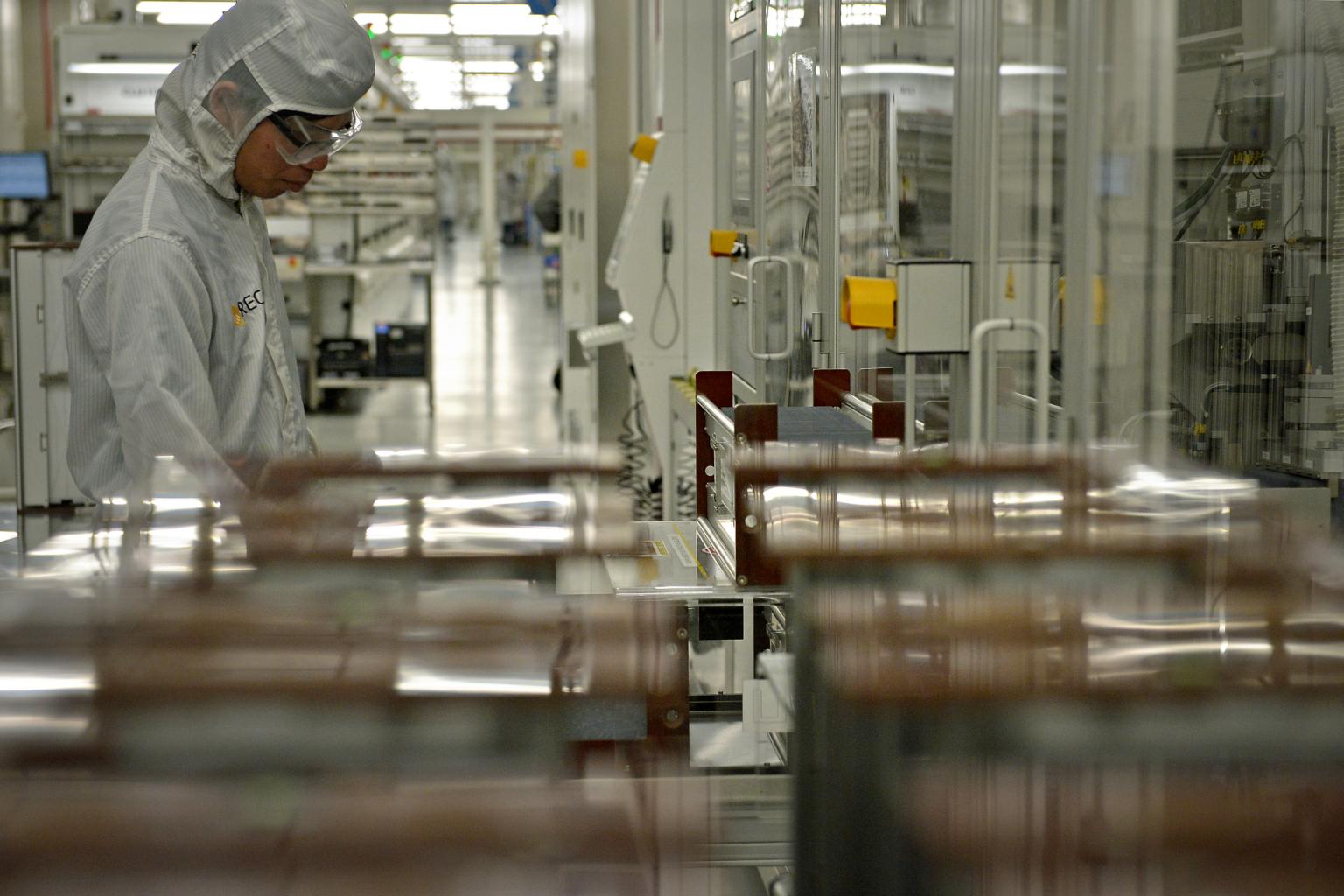Singapore factory growth cools further in October amid US-China trade tensions
Sign up now: Get ST's newsletters delivered to your inbox

Both overall manufacturing and the electronics sector saw slower growth in new orders, new exports, factory output, inventory and employment level, said the Singapore Institute of Purchasing and Materials Management.
ST PHOTO: KUA CHEE SIONG
Ng Jun Sen
Follow topic:
SINGAPORE - Singapore's manufacturing outlook continued to darken in October as US-China trade tensions began to affect factories across Asia.
The Purchasing Managers Index (PMI), a key barometer of factory activity, dipped by 0.5 point to 51.9 last month from September, its second straight month of decline. The PMI came in below the 52.2 forecast of economists polled by Bloomberg.
The electronics sub-index saw a steeper drop of 0.9 point to 50.5, its lowest reading since November 2016 and just above the 50-mark which separates expansion (above 50) from contraction.
Both overall manufacturing and the electronics sector saw slower growth in new orders, new exports, factory output, inventory and employment level, said the Singapore Institute of Purchasing and Materials Management, which publishes the index based on a survey of over 150 industrial companies.
On the bright side, the overall PMI logged its 26th consecutive month of expansion.
But the factory output index of 52.6 was the lowest reading since July last year while the imports index of 51.1 was the lowest since February last year. The indexes of both the finished goods and input prices both expanded at lower rates, and the order backlog index reverted to a contraction.
The slower growth for Singapore factories follows an overall weakness across Asian manufacturing PMIs last month. Taiwan, Malaysia and Thailand saw their indexes slipping into contraction territory at 48.7, 49.2 and 48.9 respectively.
China's official index fell to 50.2 in October down from 50.8 in September, its weakest since 2016. Its Caixin manufacturing PMI - reflecting sentiments of smaller private firms - grew marginally to 50.1 in October from 50 in September.
One exception is Vietnam's PMI, which rose from 51.5 in September to 53.9 last month. A recent American Chamber of Commerce survey of 430 US firms in China showed that Vietnam was the top location for companies hoping to move production out of China amid the trade war.
OCBC Bank's head of treasury research and strategy Selena Ling said these regional trends show who the potential winners and losers of the US-China trade conflict may be.
"Singapore's 2018 fourth quarter manufacturing growth is likely to be poised on a relatively lacklustre footing, and barring a de-escalation of the US-China trade war, may soften further into the first quarter next year," said Ms Ling.
Singapore is still braced for a prolonged trade conflict, with Trade and Industry Minister Chan Chun Sing stating recently that the conflict may last for a long while.
Last week (Oct 26), the Monetary Authority of Singapore said in its half-annual macroeconomic review that the negative spillovers of global trade tensions could impact the country in the latter part of 2018 and beyond.
US President Donald Trump on Thursday, though, ignited investors' hope of a happy resolution to the trade war. He tweeted that he shared "a long and very good conversation" with his China counterpart Xi Jinping over the phone, "with a heavy emphasis on trade".
Referring to planned face-to-face meetings with Mr Xi at the G-20 summit in Argentina later this month, Mr Trump said "those discussions are moving along nicely".
On Friday, Bloomberg, quoting unnamed sources, said Mr Trump has asked key US officials to begin drafting potential terms.

